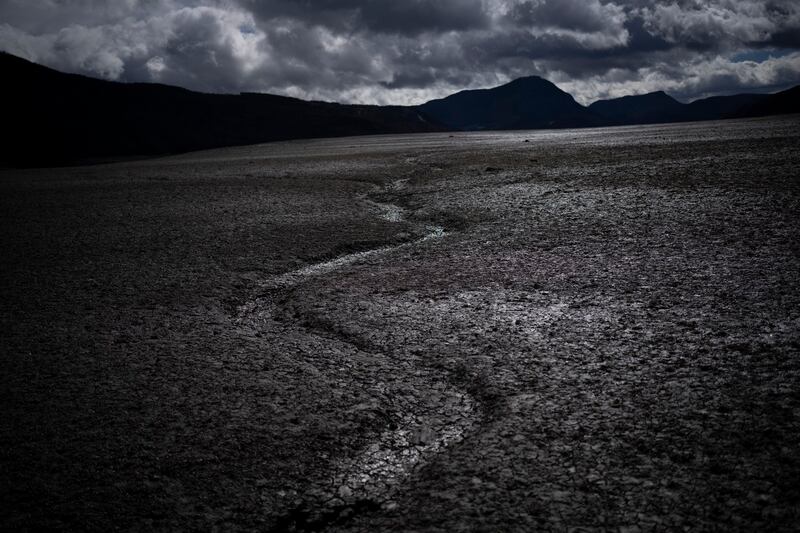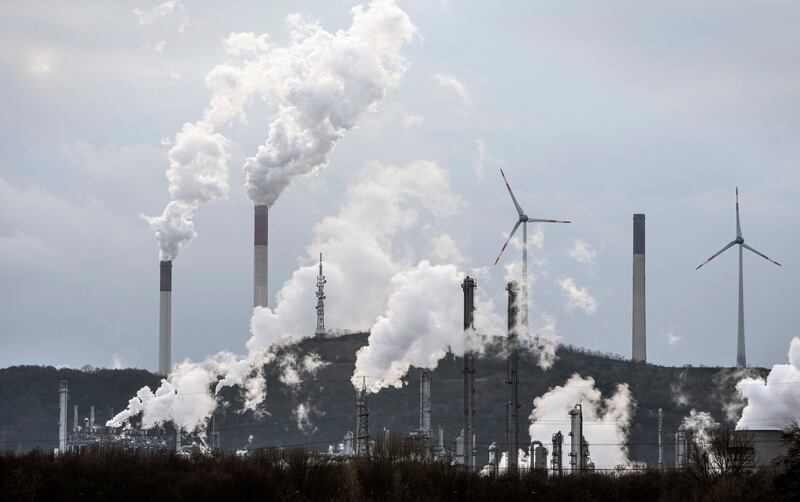Updated at 2:15 P.M. EDT on 03-20-2023
The world is approaching irreversible levels of global warming, with catastrophic consequences becoming inevitable, according to a major new United Nations report that provided a sobering assessment of the climate change inaction.
“Continued greenhouse gas emissions will lead to increasing global warming, with the best estimate of reaching 1.5°C (2.7°F) in the near term in considered scenarios and modeled pathways,” said the report authored by nearly 300 scientists from 67 countries.
“It is unequivocal that human influence has warmed the atmosphere, ocean, and land,” said the Synthesis Report,by the Intergovernmental Panel on Climate Change (IPCC), a 195-nation U.N. body for assessing the climate change science.
It was approved on Monday afternoon following a week-long session in Switzerland.
Scientists consider keeping global warming below the critical threshold of 1.5 degrees Celsius above pre-industrial levels the limit to stave off climate change’s most catastrophic and irreversible effects.
“The climate time bomb is ticking. But today’s IPCC report is a how-to guide to defuse the climate time bomb. It is a survival guide for humanity,” U.N. Secretary-General António Guterres said on Monday.
“As it shows, the 1.5-degree limit is achievable. But it will take a quantum leap in climate action.”
Simon Stiell, the U.N.'s climate change executive secretary, called the 2020s "a critical decade for climate action."
"Global emissions need to be reduced by nearly 43% by 2030 for the world to achieve the Paris Agreement’s goal," he said. “The Synthesis Report highlights just how far off-track we are.”
Sea levels will definitely rise
Despite efforts to fight global warming, sea level rises are “unavoidable for centuries to millennia due to continuing deep ocean warming and ice sheet melt,” the report warned, adding that they will “remain elevated for thousands of years.”

The report said the average rate of sea level rise was 1.3 millimeters (.05 inches) between 1901 and 1971, increasing to 1.9 mm (.075 inches) between 1971 and 2006 and further increasing to 3.7 mm (.15 inches) between 2006 and 2018.
“Human influence was very likely the main driver of these increases since at least 1971,” the report said.
According to the World Meteorological Organization (WMO), the past eight years were the warmest on record globally, due to ever-rising greenhouse gas concentrations.
However, if the world implements “deep, rapid and sustained” greenhouse gas emissions reductions, faster and long-term sea level rise would be limited.
“Evidence of observed changes in extremes such as heatwaves, heavy precipitation, droughts, and tropical cyclones, and, in particular, their attribution to human influence, has further strengthened” since the last Assessment Report in 2014, according to IPCC.
1.5°C warming is most likely to occur
“Approximately 3.3–3.6 billion people live in contexts that are highly vulnerable to climate change,” the IPCC report said.
Global warming “will continue to increase in the near term” between 2021 and 2040, primarily because of continuously increasing greenhouse gas emissions, it said.

The experts said global warming is “more likely than not” to reach 1.5°C during this time, even under the very low greenhouse gas emissions scenario, and “likely or very likely” to exceed 1.5°C under higher emissions scenarios.
Mark Howden, a climate change professor at The Australian National University (ANU), also said that “in almost all emission scenarios,” global warming will reach 1.5°C in the first half of the 2030s.
According to some scenarios, global warming “declines back to below 1.5°C by the end of the 21st century,” with the best estimate of warming for 2081 –2100 at 1.4°C in case of “very low” greenhouse gas emissions, the report said.
The worst-case scenario would see a 4.4°C warming by the end of the century.
In a press statement, IPCC said that the “pace and scale of what has been done so far, and current plans, are insufficient to tackle climate change.”
Catastrophic effects of warming
The IPCC report warned that “every increment” of global warming will escalate multiple and concurrent hazards.
“More intense heatwaves, heavier rainfall, and other weather extremes further increase risks for human health and ecosystems,” IPCC said.
“In every region, people are dying from extreme heat. Climate-driven food and water insecurity is expected to increase with increased warming,” the report said, warning other adverse events, such as pandemics or conflicts, would make it unmanageable.
“A child born now is likely on average to have or experienced three to four times as many extreme climate events in their lifetime as their grandparents did,” said Howden, who was a vice-chair for a previous IPCC working group and review editor for the current synthesis report.
“So, we’re actually leaving a world behind us that is actually less safe than the world which we inherited, people of my generation.”

Aditi Mukherji, one of the 93 authors of the synthesis report, said those who have contributed least to climate change are being disproportionately affected.
“Almost half of the world’s population lives in regions that are highly vulnerable to climate change. In the last decade, deaths from floods, droughts, and storms were 15 times higher in highly vulnerable regions,” she added.
A review of global climate knowledge
The IPCC, formed in 1988, publishes comprehensive scientific assessments every six to seven years. The Fifth Assessment Report was completed in 2014 and provided the primary scientific input to the Paris climate agreement in 2016.
Monday’s final report, distilled from over 10,000 pages of research from six previous reports on climate change, published between 2018 and 2022.
“It’s outrageous that after six massive IPCC reports, 27 climate change conferences, and the eight hottest years on record —with emissions still rising— governments continue to encourage the oil and gas industry to drill deeper and wider for fossil fuels,” said Oxfam’s lead for climate policy, NafkoteDabi.
According to calculations based on Oxfam analysis in 2021, every person would need to stay below an average of 2.2 tons of CO2 emissions per year by 2030 to keep to 1.5°C.
“The richest 1% exhaust this remaining ‘carbon budget’ in just 12 days each year, while the poorest 50% of humanity emits less than half over an entire year. This inequality is absolutely ridiculous,” Dabi said.
World Resources Institute, a Washington-based research organization, said fossil fuels still account for over 80% of the world’s energy and over 75% of global greenhouse gas emissions.
“Without a radical shift away from fossil fuels over the next few years, the world is certain to blow past the 1.5 C goal,” said Ani Dasgupta, WRI’s president & CEO.
“This IPCC report is both a blistering condemnation of major emitters’ inaction and a sound blueprint for a much safer and more equitable world.”
This story has been updated to include comments from U.N. Climate change Executive Secretary Simon Stiell.
